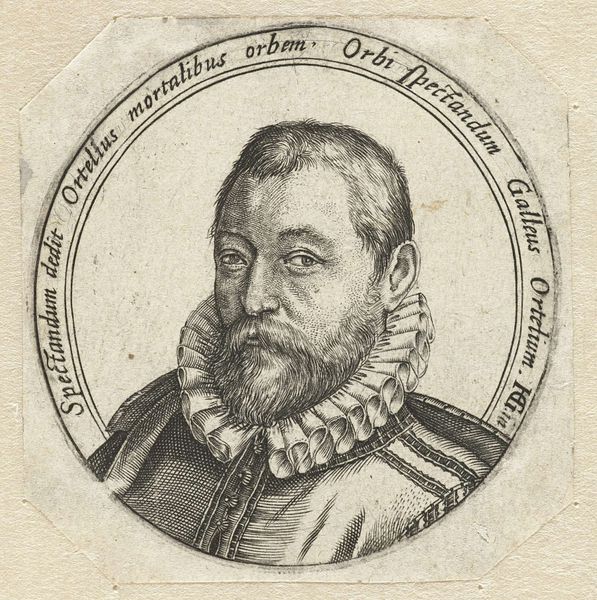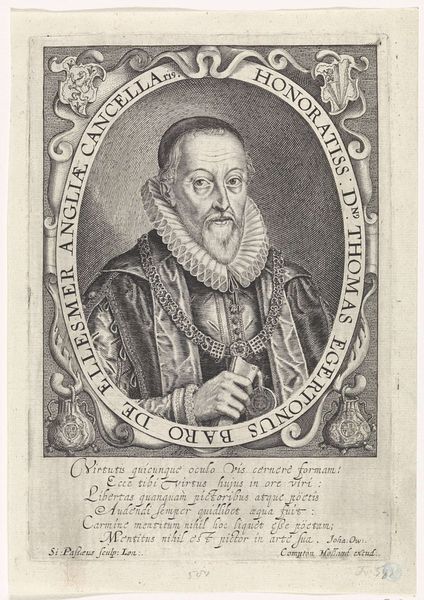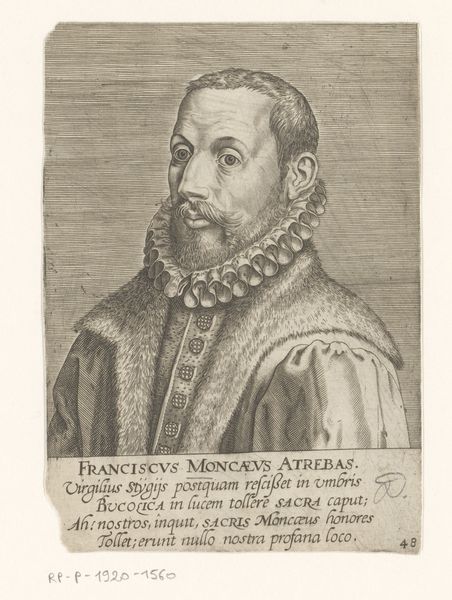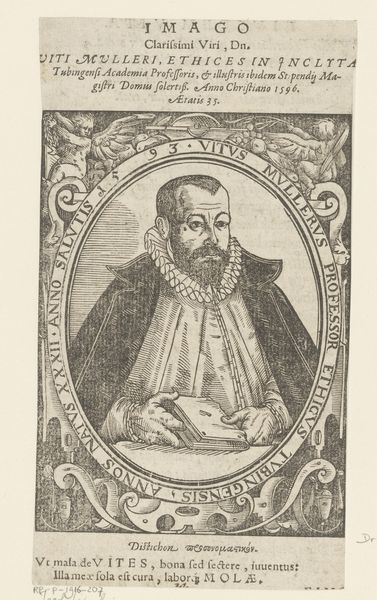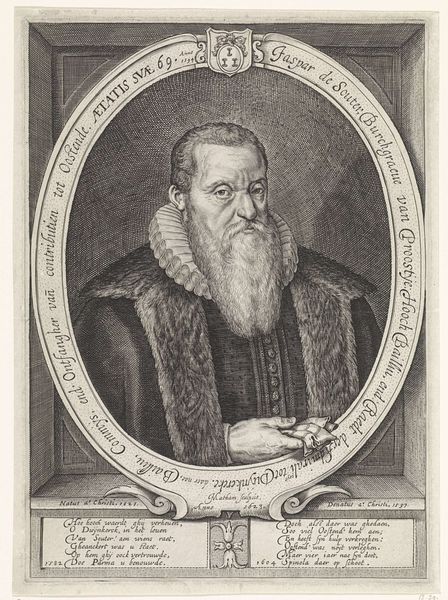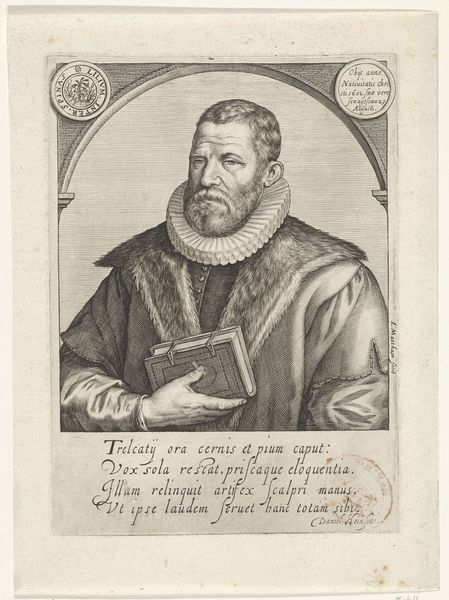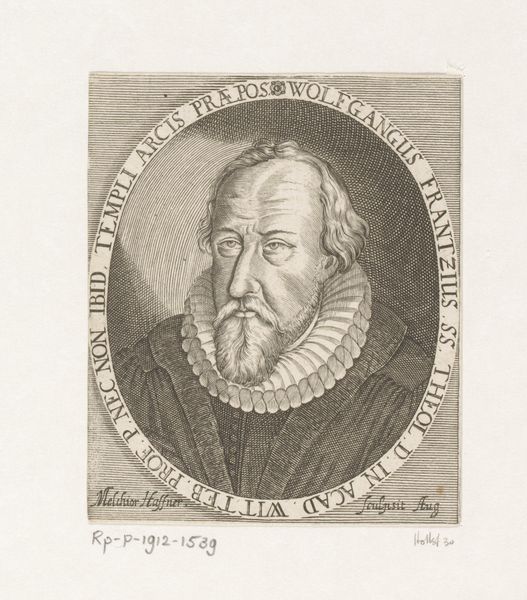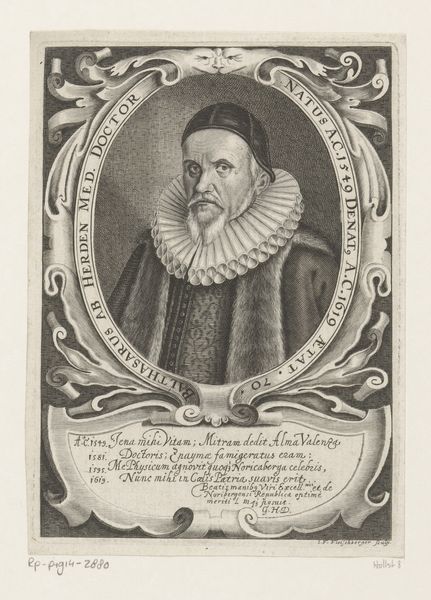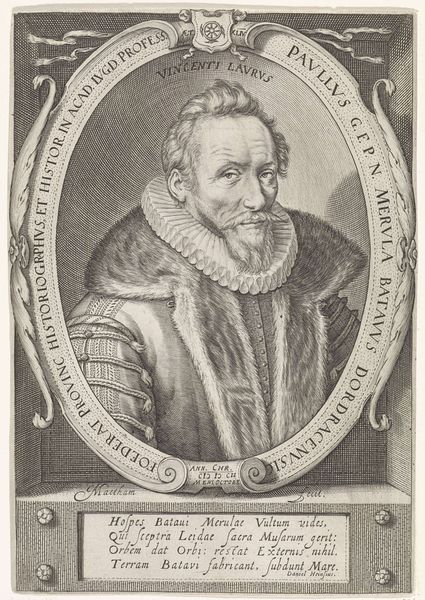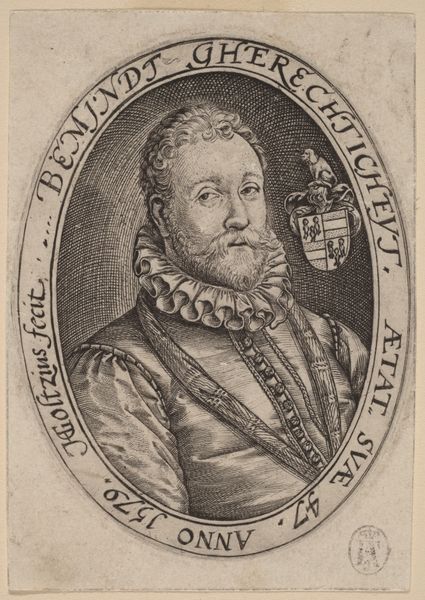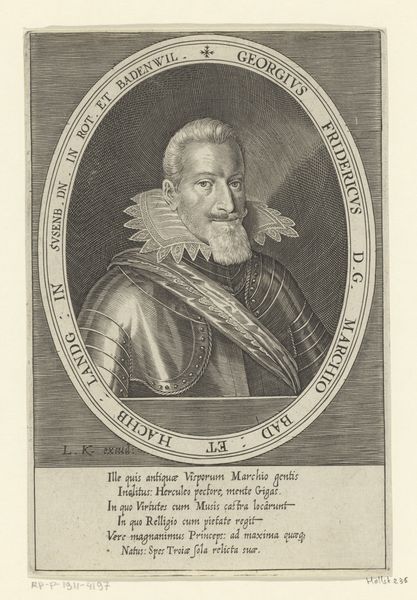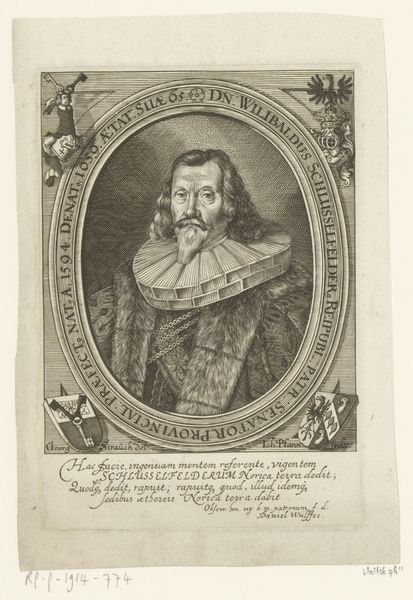
engraving
#
portrait
#
baroque
#
old engraving style
#
portrait reference
#
portrait drawing
#
history-painting
#
engraving
Copyright: Rijks Museum: Open Domain
Curator: This is a piece entitled "Portret van Johan Huyssen van Kattendijke," an engraving that we believe dates from between 1585 and 1630, attributed to François Schillemans. It's currently held here at the Rijksmuseum. Editor: My immediate impression is of formality, perhaps a touch of somberness. The figure is rigidly posed, with a direct gaze that feels almost…judgmental. And look at the textures meticulously captured by the engraver. Curator: Indeed. This engraving embodies the conventions of portraiture of its time. These types of works offered entry into debates about identity and social roles through its material form. Johan Huyssen van Kattendijke, in all his rendered dignity, participates in an aesthetic language designed to project power and lineage. Note the inscription framing his portrait, almost as a form of legitimizing the visual impact. Editor: Exactly, it's so telling. This engraver's process of manipulating metal to convey not just likeness, but also social status. The ruff around his neck, that's incredible; the fur trim of his robe--those textures speak volumes about craftsmanship and consumption. We see it through their rendering of clothing, a marker of social position. And what about the chain he wears? Do we know anything about the metallic composition? Curator: Sadly not beyond observation, but such chains symbolized ties to institutions of power and patronage, and even potentially trade. This particular image speaks to gender in relationship to the means of representation; note the subject’s access to artistic production compared to most individuals. The inscription is a marker of literacy that was rarely available to women, pointing towards privilege based on class and gender that also ties into systems of visibility and representation. Editor: You know, considering the reproductive nature of engravings and its original materials, it is fascinating to think about how prints such as these contributed to building social systems of power, from artist workshops to its consumption in household spaces. It's a delicate print that captures an impactful visual record of social class and how wealth was created by laborers that would never share its gains. Curator: It's true. It provides insight into artistic and economic models that also influenced, and continue to influence, constructions of gender, class, race and power within broader cultural dialogues. Editor: A striking example of how art making practices have historically served and solidified social structures. It really pushes one to think of all those who would never see such attention to the detail of their own identity and likeness represented in their lifetime.
Comments
No comments
Be the first to comment and join the conversation on the ultimate creative platform.
